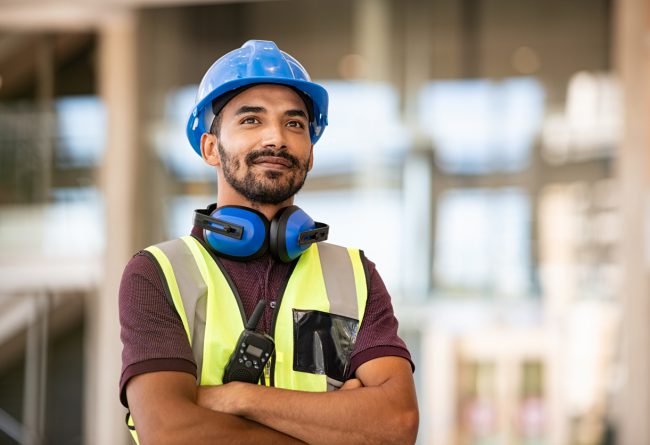Commonsense Steps Rail Industry Safety

Commonsense Steps to Improve Rail Industry Safety and Accountability
In recent years, the American rail industry has faced numerous safety and accountability challenges. Comprehensive training measures are an important way to address these challenges as they enhance the safety of passengers, employees, and overall rail infrastructure.
Our Railroad System Must Be Kept Safe
Safety initiatives must remain a top priority to protect lives, safeguard assets and build public trust in our rail systems. Millions of passengers rely on the rail system – both as daily public transportation in urban areas and to travel across the country – and maintaining their safety is paramount to maintaining public confidence in the rail network. Our nation’s railways also employ a large workforce, including engineers, conductors, maintenance workers, and support staff – that must be protected from accidents and occupational hazards.
Our rail system is also an economic driver, transporting goods and connecting businesses across the country. Disruptions or accidents on the rail network can have far-reaching economic and environmental consequences that affect supply chains, trade, and commerce. Though rail transportation is generally considered more environmentally friendly for both cargo and passengers, railway accidents can cause environmental contamination, which impacts local populations and ecological systems.
High Profile Train Incidents
In 2022, the Federal Railroad Administration reports that there were 518 derailments nationwide, which caused five injuries and more than $100 million in damage. While many of these derailments occur without significant incident or damage, the number of derailments and their impact is on the rise.
In February 2023, a Norfolk Southern freight train derailed in East Palestine, Ohio, near the Ohio-Pennsylvania state line. Fifty of the train’s 150 cars were affected, and 20 of those cars contained hazardous materials, according to the EPA. These materials contaminated the ground near the tracks and leached into a tributary of the Ohio River. More than half of East Palestine’s residents evacuated the area, with some reporting a range of health conditions thought to be the result of exposure. The state of Ohio has since filed a lawsuit against Norfolk Southern to force the operator to pay for cleanup and environmental remediation costs, but the true effects and cost of this high-profile train accident won’t be known for years to come.
Issues: Lax Safety Practices, Pressure to speed Up Deliveries to Bolster Profits
While the rail industry is subject to strict regulations and oversight from government agencies, internal pressures are having an impact on safety. Under pressure to minimize costs, rail companies may cut corners on maintenance and inspections, leading to infrastructure deterioration. Profit pressures are cutting into investments in employee training, leaving employees unfamiliar with policies, procedures, and how to handle complex situations and emergencies. This can lead to poor decision-making, slower response times, and an increased likelihood of human error. Increasing efficiency and meeting tight deadlines mean that some rail companies are prioritizing speed and productivity over safety, tacitly encouraging employees to disregard safety protocols or bypass important safety checks.
USDOT Holds Rail Companies Accountable
Historically, the US Department of Transportation (USDOT) has held railway companies accountable. After a series of high-profile freight rail incidents in the 2010s, the federal government passed significant new rail safety rules that decreased derailments by 15 percent. But with derailments and issues still occurring, the USDOT has committed to increasing rail company accountability even further through the full use of its authority, Congressional collaboration, and new funding available from the Bipartisan Infrastructure Law, which is funding new safety initiatives through the Federal Transit Administration (FTA).
Biden Calls for Expanding Rail Safety Efforts
In March 2023, President Biden released his FY2024 budget, which calls for an investment of more than $1 billion to expand the USDOT’s FRA core safety efforts. This bill includes funding to support the agency’s railroad safety personnel, expand critical inspection and audit capabilities, enhance data analysis to better identify the root causes of railroad safety incidents, and increase stakeholder outreach and partnerships to address and eliminate threats to public safety. Other funding will be allocated toward infrastructure improvements, including track upgrades, rolling stock, and infrastructure systems. Finally, funding will be provided to advance new technologies and practices that improve railroad safety. Though there is significant pushback from the rail industry, President Biden has noted that these efforts have bipartisan support.
Greater Safety Means Investing in Human Resources, Physical Infrastructure, and Improved Whistle Blower Program
Improving railway safety is a multi-prong approach. According to Transportation Secretary Pete Buttigieg, the USDOT is focusing on five areas to address safety: safer people, safer roads, safer vehicles, safer speeds, and post-crash care. Additionally, investments are being made to assist workers in feeling comfortable in reporting their safety concerns without fear of repercussion.
While “whistleblower” programs, in which employees can report issues without repercussion, have been in place for many years, their effectiveness has been called into question. Railroad workers have noted that reports can be ignored or be the subject of actions against them. The USDOT is working on new ways to reduce those concerns, such as the FRA’s Confidential Close Call Reporting System (C3RS), which offers a safe environment for employees to report unsafe events and conditions. Employees receive protection from discipline and FRA enforcement. In addition, railroads receive protection from FRA enforcement for events reported within C3RS.
Bolster Safety Training Efforts
Training plays a crucial role in improving rail safety by ensuring that employees have the necessary knowledge, skills, and expertise to perform their jobs safely and efficiently. Training enhances competency, from understanding roles and responsibilities to procedures and protocols. Proper training also reduces human error, a significant factor in rail accidents.
Training reinforces the importance of safety and organizational procedures, familiarizes employees with potential hazards, and can teach effective responses in emergency scenarios. A commitment to training also instills a strong safety culture, fostering an environment where it remains a priority.
Finally, proper training ensures regulatory compliance. Training programs that cover relevant regulations and standards ensure that employees understand the legal requirements pertaining to their roles, helping the organization maintain compliance and avoid potential penalties or fines.
Safety and harassment training is constantly evolving, and Enterprise Training Solutions offers online learning programs focusing on safety essentials and compliance training, from OSHA compliance and hazard communications to harassment prevention and compliance training. To learn more about the full suite of online training courses available through ETS, click here.


